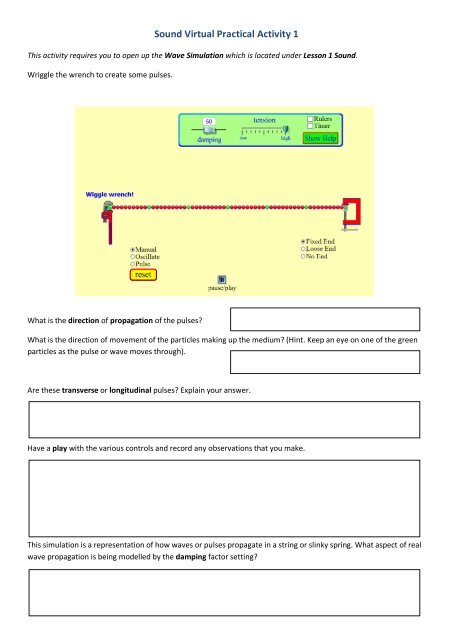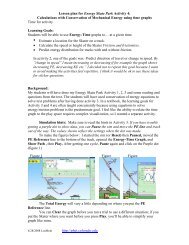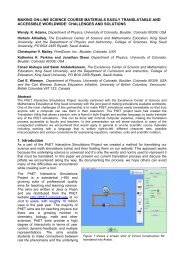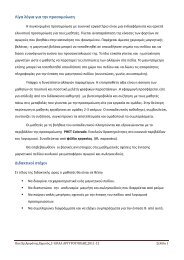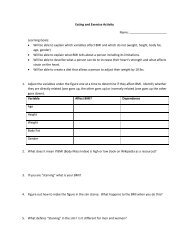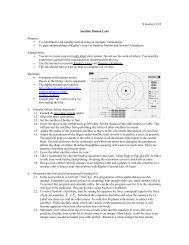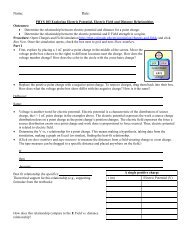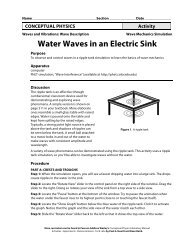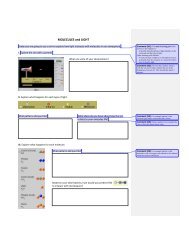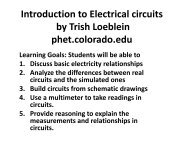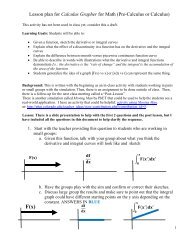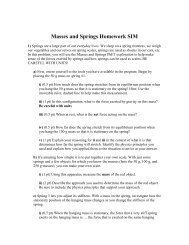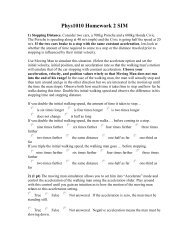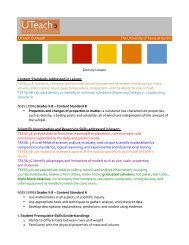Sound Virtual Practical Activity 1.pdf - PhET
Sound Virtual Practical Activity 1.pdf - PhET
Sound Virtual Practical Activity 1.pdf - PhET
- No tags were found...
You also want an ePaper? Increase the reach of your titles
YUMPU automatically turns print PDFs into web optimized ePapers that Google loves.
<strong>Sound</strong> <strong>Virtual</strong> <strong>Practical</strong> <strong>Activity</strong> 1This activity requires you to open up the Wave Simulation which is located under Lesson 1 <strong>Sound</strong>.Wriggle the wrench to create some pulses.What is the direction of propagation of the pulses?What is the direction of movement of the particles making up the medium? (Hint. Keep an eye on one of the greenparticles as the pulse or wave moves through).Are these transverse or longitudinal pulses? Explain your answer.Have a play with the various controls and record any observations that you make.This simulation is a representation of how waves or pulses propagate in a string or slinky spring. What aspect of realwave propagation is being modelled by the damping factor setting?
How does tension affect the speed of the pulse?Now set the damping level to zero.Set up with “No end” and tick the rulers and timers boxes to show the rulers and the timer. They can be movedaround to suit your requirements.With the tension setting at high, press the pulse button and the quickly hit the pause/play button and the stepbutton to obtain distance and time data for the motion of the pulse.Repeat this for tension settings of medium (half way) and low.Record your results in the table below and calculate the speed of the pulse for each of the three tension settings.Tension Distance (cm) Time (sec) Speed (cm/s)HighMediumLowAs the tension increases, what happens to the speed of the pulses?
The Wave EquationSet the source control to “oscillate” to create a continuous wave as shown below:Use the horizontal ruler to accurately record the distance between;a) Successive crestsb) Successive troughscmcmThis distance is called the wavelength, λ .Use the step control to locate the wave in exactly the position shown in the above screenshot and then reset thetimer to zero.Use the step control again to record the time taken for a wave crest from the source to travel a distance of onewavelength to the right.secIf you observe carefully you will notice that this is the same time as it takes for the source to complete one completedown and up cycle. This time is called the period, T and is measured in seconds.Complete the following:In a time of one ................................ the wave travels a distance of one......................................... to the right.Wavespeed = distance/ time = ............................ / .....................................Frequency, f, is the number of cycles per second and is equal to 1/TSo substituting f for 1/T we getv =This is known as the Wave EquationWhere v= wavespeed (ms -1 ), f = frequency (Hz) and λ = wavelength (m)
AcknowledgementsThis simulation was created and made available by:<strong>PhET</strong> Interactive SimulationsUniversity of Coloradohttp://phet.colorado.edu.Further Notes


